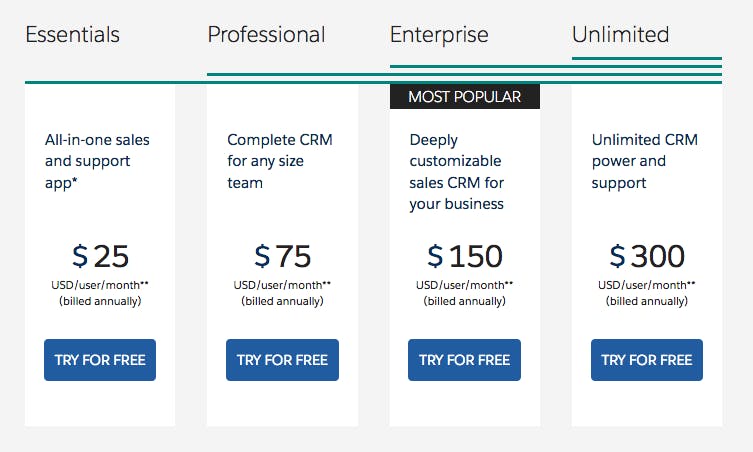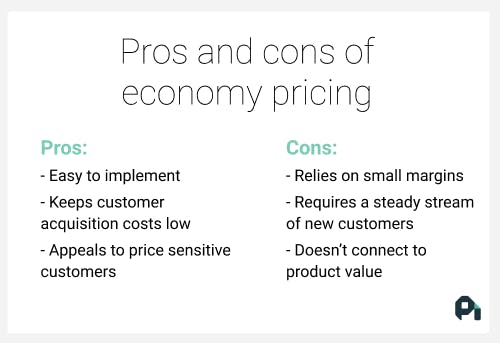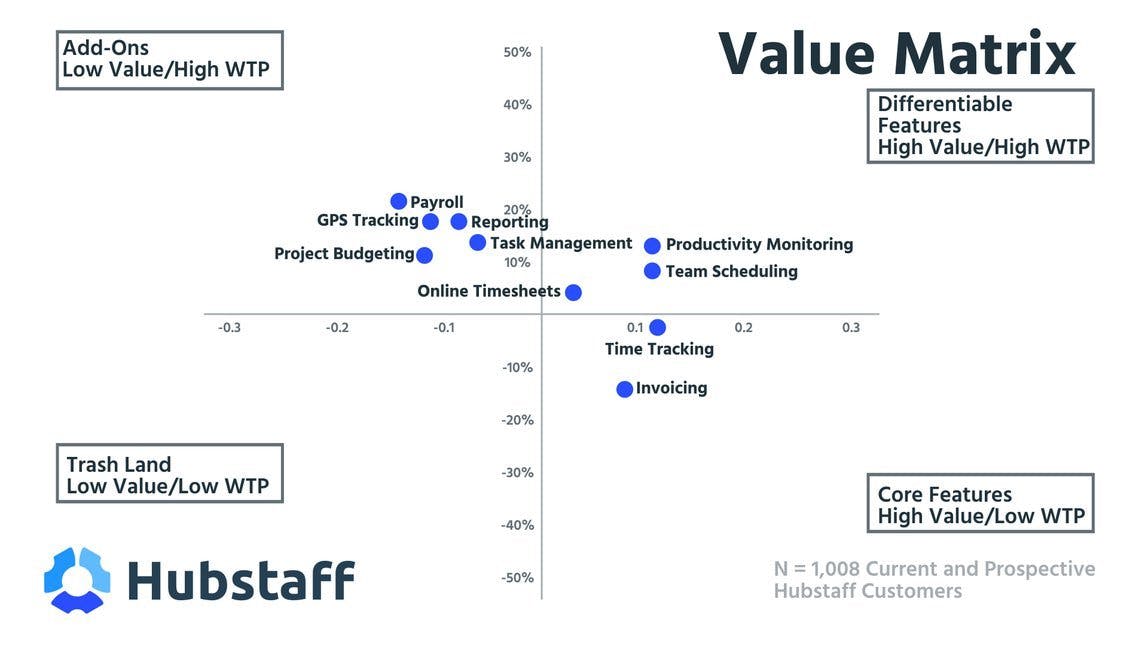Premium pricing is a common pricing tactic used by brands to leverage their high-value goods, but is it the best pricing method?
So, you’re setting out with your company’s first product offering. The SaaS field is intensely competitive, and like everyone else, you’re looking for a sales strategy that will help your product bring in more revenue than similar products that your competitors offer. One simple way of doing this is to just charge more for your product—also known as premium pricing.
Product quality, and the perception of that quality, reigns supreme in SaaS. In a field stacked with competitors, a brilliant product priced at a premium can give your current and prospective customers a favorable impression of your business's commitment to high quality.
Of course, premium pricing is not without its challenges. It is an exacting pricing strategy that isn't appropriate for every type of SaaS business. For those that can make it work, however, it can lead to untold market advantages, improved perception of your product’s quality, and tremendous profit margins.
What is premium pricing?
Premium pricing is a strategy that involves tactically pricing your company’s product higher than your immediate competition. The purpose of pricing your product at a premium is to cultivate a sense of your product’s market being just that bit higher in quality than the rest. It works best alongside a coordinated marketing strategy designed to enhance that perception.
Premium pricing is closely related to the strategy of price skimming. However, unlike skimming, prestige pricing involves setting high prices and keeping them. Luxury brands have often implemented premium pricing, but this strategy has its place in SaaS, too.
Pros and cons of premium pricing
Like all potentially high-yield pricing strategies, premium pricing can be a demanding approach. Evaluate your company’s position and its targets for growth against what it takes to really make a premium pricing strategy a success.
Using this list of pros and cons, you can make a more informed decision before taking further steps to implement premium pricing at your company.
Premium pricing pros
Premium pricing benefits are largely self-explanatory—done right, the strategy can lead to higher profit margins and improved public perceptions of your company.
Higher profit margins
Premium pricing will naturally result in higher profit margins for your company, if successful. It’s basic math—a higher price-per-unit leads to higher profit-per-unit sold.
Improves brand perception & value
Premium pricing also improves brand value and the perception of your company. Not only does a premium-priced product accrue its own high-quality reputation, but it also improves the perception of the rest of your product portfolio.
Build a moat around your brand
If a premium pricing strategy is successful, it can raise barriers to entry in your industry. Other companies won’t be able to compete with your product without boasting equivalent product quality and price points. You can rapidly entrench a market advantage with a well-executed premium pricing strategy.
Premium pricing cons
Making a success out of premium pricing generally depends on controlling the context around your product. A delicate matrix of factors needs to be in alignment, and this can be seen as the method’s main drawback. And the same things that bring about the benefits of premium pricing can also prove restrictive for your company.
Dependence on price inelasticity
Premium pricing really does depend on price-inelastic consumer demand—without an impregnable USP (unique selling point), you can’t justify the higher price tag for your product. That means your product development costs are likely to be much higher if you’re selling at a premium.
Limits market opportunity
Premium pricing limits your ability to sell your product to a mass market. While this is less of a concern for SaaS companies than it would be for, say, fashion brands, you’re still voluntarily pricing out some of your market share.
Reduces price competitiveness
Pricing at a premium leaves you vulnerable to undercutting tactics from competitors, particularly if your field is crowded. Your premium price can work against you if a competitor comes along that sells an equivalent product/service more cheaply.
When businesses use premium pricing
Because premium pricing is sensitive to your company’s reputation, you’ll need to meet a number of conditions before using this strategy. Many brands start to use premium pricing once they’ve developed a large demand. Once your company enjoys brand loyalty and has a correspondingly strong customer base, you can afford to price at a premium, knowing you have an assured set of buyers.
Brand loyalty also engenders strong word-of-mouth publicity for your product. In this case, customer willingness to pay will greatly depend on how much your buyers are convinced that other buyers are willing to pay that premium. This is known as building brand equity for your product.
Brands that use premium pricing
There are a number of companies, both SaaS and otherwise, that use premium pricing as part of their wider strategy. While many companies that sell physical products use more straightforward pricing strategies, the premium pricing model has proliferated in the SaaS industry.
Salesforce
As one of the few SaaS companies that successfully incorporated price skimming into its approach, Salesforce also has a strong pedigree with premium pricing. Let’s take a look at its pricing page.

Salesforce’s “Unlimited” subscription is undoubtedly a premium-priced option. Any prospect will be able to recognize that the product they’ll get with this more expensive option will be almost totally different from the cheaper (but well-titled) “Essentials” plan.
The Salesforce approach of offering all of its plans, even the premium, as an initial free trial is particularly astute. Free trials are another great way of building brand equity, which, as we’ve already mentioned, premium pricing thrives on.
Hubspot
HubSpot is even more pronounced when it comes to differentiating run-of-the-mill options from premium ones.

For a company like HubSpot, whose services have a near-universal appeal across the SaaS spectrum, the scope of the premium “Enterprise” option is vital for demonstrating both the quality and versatility of its features.
Do we recommend premium pricing for SaaS companies?
Is premium pricing the right strategy for a SaaS company? The answer is both yes and no. Premium pricing can certainly be incorporated into a high-performing pricing strategy. Still, our observations suggest that it performs best as one option within a more multi-faceted approach to pricing.
Let’s look at Appcues’ pricing strategy to see an example of this:

The adaptability of a SaaS product means that SaaS companies have an easier time appealing across different market segments. Appcues’ pricing page showcases two premium pricing choices alongside low-end (“Essentials”) and middle-range (“Growth”) options. The “Growth” option could even be interpreted as a flat-rate, premium-priced plan that offers much more options to customers willing to sanction a higher outlay.
However, 'it's the “Let's Talk” option where Appcues shows off a particularly shrewd use of the principles of premium pricing. It means that Appcues’ upper ceiling on premium revenue is basically infinite. The undeclared pricing prevents the option from seeming prohibitive. At the same time,the presence of the cheaper-but-still-somewhat-premium “Growth" plan makes the Appcues product seem more versatile in its appeal.
Splitting the wide variety of services your company might offer into sensible pricing options is a cornerstone of a successful SaaS pricing strategy. That’s why premium tactics have their place — and why it’s not wise that they should dominate your approach.
How to implement partly premium pricing for SaaS
Competition in SaaS fields is often so fierce, and a good SaaS product will usually appeal to more than one market sensitivity. For these reasons, a pure premium pricing approach is usually not the best way to go. A SaaS company that exclusively prices at a premium alienates more price-sensitive customers, of which there may be many, and opens the company up to easy undercutting from savvy competitors.
The best way to incorporate the benefits of premium into a successful SaaS pricing strategy is to carefully manage your product features. Place your features that are the highest value and that your customers are most willing to pay for into an upper-tier that is premium priced. Look at this Hubstaff matrix below or the Troops pricing page for ideas on how to do this.

From there, you can build a premium tier that serves up your product’s high-value features while preserving cheaper options for younger or smaller companies unable to shell out for the premium. Your profit-per-unit sold may not quite reach the heights of a premium-priced non-software option, but the cumulative effect on your bottom line will be unmistakable.
Premium pricing FAQs
How to charge premium pricing?
Before you set a higher price of a product, businesses are advised to:
- Analyze the market and their direct competitors
- Build a specialized product to serve niche markets and specific demographics
- Ensure their product is of higher quality than the industry average
- Work on increasing brand reputation before setting higher prices
What companies use premium pricing?
The best examples of premium pricing are premium brands in the fashion and tech industry. Some of the biggest names that rely on premium pricing to indicate their products are luxury goods Rolex, Chanel, Gucci, Apple, etc. Premium pricing has also grown in popularity among SaaS companies like Salesforce and Hubspot.
Why use a premium pricing strategy?
Premium pricing could be an excellent strategy to increase sales and earn a high-profit margin to ultimately gain a competitive advantage.



